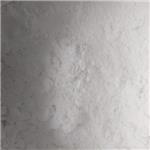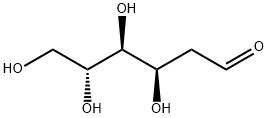2-Deoxy-D-glucose: A Versatile Molecule with Anticancer and Antiviral Potential
2-Deoxy-D-glucose (2DG) is an analogue of glucose in which a 2-hydroxyl group is replaced by hydrogen. Despite this minor change in its structure, glucose transporters can still carry 2DG into cancer cells disguised as “fake sugar” that they crave intensely. This alteration prevents sugar from participating in anaerobic glycolysis, the metabolic pathway that breaks down glucose for energy. By interfering with glycolysis, 2-Deoxy-D-glucose has the potential to starve cancer cells, which heavily depend on glucose for their rapid growth. When taken as a powder, 2DG looks almost identical to table sugar, and does not have any taste – other than being a bit gritty – making it a tasteless nutrient-like remedy that can be mixed in water and consumed on an empty stomach.

2-Deoxy-D-Glucose: A Novel Pharmacological Agent for Killing Hypoxic Tumor Cells
2-Deoxy-D-glucose (2-DG, 2-deoxy-D-arabino-hexopyranose) is a natural, nonmetabolizable glucose analog and a competitive inhibitor of glycolysis in which the 2-hydroxyl group is replaced by hydrogen. 2-DG blocks the activity of different enzymes involved in glycolysis, leading to cell death. Hyperglycemic condition aggravates cancer cell proliferation, inflammatory conditions, and viral infection. In this review, the pharmaceutical properties of 2-DG have been discussed. This review article describes the pharmacological properties specific to 2-DG and its isotopic derivatives but excludes substituted derivatives of 2-Deoxy-D-glucose. 2-DG has a molecular weight of 164.158 Da, logP of −1.525, five hydrogen bond acceptors (HBA), and four hydrogen bond donors (HBD). Thus, there are four matching Lipinski's rules. The polar surface area (PSA) of 2-DG was 90.15, and it consisted of one rotatable bond (RotB). Thus, two matching Veber's rules exist.[1]
Toxic effects of 2-Deoxy-D-glucose result from its ability to block glycosylation but not glycolysis. Ketogenic Diet increases tolerance against glycolysis inhibitors. Experimental results show that 2-DG is a relatively harmless compound at low doses, but that it can lower blood pressure and slow breathing at higher doses. Most of the studies indicate that a clinically tolerable dose of 2-Deoxy-D-glucose is up to 63 mg/kg/day. Beyond this several side effects are observed including reversible hyperglycemia, gastrointestinal bleeding, and QTc prolongation. However, recent studies carried out by DRDO use a higher dose of 90 mg/kg/day. Exposure to 2-Deoxy-D-glucose causes cytotoxicity and radiosensitization via a mechanism involving changes in thiol metabolism and these effects may be more prominent in transformed vs. normal cells. UV-HPLC (195 nm) has been used to detect and quantify 2-DG using a μBondapak 10 μm NH2 column and a Varian MicroPak 10 μm NH2 column. The retention time is usually four minutes with an eluent 85% MeCN/H2O. Polymer-based amino column (HILICpak VG-50 4E column) and Shodex SUGAR SC1011 columns have also been used to separate 2-Deoxy-D-glucose and glucose. Pharmacokinetic studies of 2-DG involve the estimation of 2-deoxyglucose in the plasma. For this purpose, precolumn fluorescent derivatization was achieved by reductive amination of 2-DG using sodium cyanoborohydride and 2-aminobenzoic acid.
2-Deoxy-D-glucose has been investigated for combination therapy to inhibit cancerous cells. However, the recent use of 2-DG to treat COVID-19 patients under emergency conditions has opened up new hope for the development of new antiviral medicines. COVID-19 is a viral disease caused by SARS-CoV-2 variants. 2-DG is a dual D-glucose and D-mannose mimetic and exploits increased glucose metabolism to kill glycolytic cells. The biological effects of the molecule 2-DG include inhibition of sugar uptake, inhibition of glucose metabolism, antiviral, anti-inflammatory, anticancer, antiepileptic activity, and more. It has found use as a tracer, cancer diagnostic tool, and metabolite inhibitor. Positron emission tomography has made use of 18F-fluoro-2-deoxy-D-glucose. Due to its ability to reduce inflammation and kill glycolytic cells, 2-Deoxy-D-glucose exhibits activity against SARS-CoV-2. Antiviral properties of 2-DG have paved the way for the development of new antiviral drugs and therapies for hyperglycemic patients. Further investigation is necessary to determine the safest doses for various applications, the mechanism of action, the toxicity, and the interactions of 2-DG with various edibles.
2-deoxy-d-glucose as an adjunct to standard of care in the medical management of COVID-19
Upon infecting host cells, viruses reprogram host cell metabolism for their own rapid replication. New virion assembly requires high levels and turnover of nucleotides and lipids, which are achieved by elevated levels of glucose transporters and enhanced aerobic glycolysis (i.e., Warburg effect). Administration of 2-deoxy-d-glucose leads to its preferential accumulation within virally infected host cells, on account of the higher number of glucose transporters on the membranes of these virally infected cells, as compared to uninfected cells. Subsequently, 2-DG blocks glycolysis, resulting in the depletion of adenosine triphosphate (ATP) and anabolic intermediates required for viral replication and packaging. In addition to this direct effect, 2-deoxy-d-glucose as a mannose analog interferes with N-linked glycosylation of nascent viral proteins to form defective progeny virions with low potential to secondarily infect neighbouring cells; altered/mis-glycosylation also leads to formation of mis-folded proteins causing endoplasmic reticulum stress, thereby activating the unfolded protein response which in turn inhibits viral synthesis and replication. Moreover, 2-deoxy-d-glucose also exerts anti-inflammatory effects and was shown to inhibit viral infection and inflammation in lungs in a murine model.[2]
The clinical experience of COVID-19 management suggests that no single agent is sufficient to treat all COVID-19 cases, and a multimodal approach is imperative. In this context, we evaluated 2-deoxy-d-glucose as a potential therapeutic option for COVID-19 as an adjunct to standard of care. To the best of our knowledge, this is the first clinical study of 2-DG in COVID-19 patients. This study was based on extensive safety evidence for 2-deoxy-d-glucose from prior clinical studies, antiviral efficacy of topically applied 2-DG in a herpes simplex study, and in vitro inhibition of SARS-CoV-2 by 2-DG. Results of the current phase II study suggest 2-deoxy-d-glucose holds promise as adjunctive treatment to standard of care, in the management of moderate to severe COVID-19 and have encouraged confirmatory evaluation of its efficacy and safety in a larger phase III clinical trial. If confirmed, 2-deoxy-d-glucose may provide healthcare practitioners with another option to treat moderate to severe COVID-19 patients.
2-Deoxy-d-Glucose and Its Analogs
The ability of 2-deoxy-d-glucose (2-DG) to interfere with d-glucose metabolism demonstrates that nutrient and energy deprivation is an efficient tool to suppress cancer cell growth and survival. Acting as a d-glucose mimic, 2-DG inhibits glycolysis due to formation and intracellular accumulation of 2-deoxy-d-glucose-6-phosphate (2-DG6P), inhibiting the function of hexokinase and glucose-6-phosphate isomerase, and inducing cell death. In addition to glycolysis inhibition, other molecular processes are also affected by 2-DG. Attempts to improve 2-DG’s drug-like properties, its role as a potential adjuvant for other chemotherapeutics, and novel 2-DG analogs as promising new anticancer agents are discussed in this review.[3]
For transport into the cell, 2-DG competes with glucose and can competitively inhibit glucose transport. Oxygen deficiency, more common in the intratumoral environment, increases the expression of glucose transporters and glycolytic enzymes, which increases 2-DG uptake in cancer cells as compared to normal cells in an aerobic environment. After entering the cell, 2-DG is phosphorylated by hexokinase II to 2-deoxy-d-glucose-6-phosphate (2-DG-6-P) but, unlike glucose, 2-DG-6-P cannot be further metabolized by phosphoglucose isomerase (PGI) to a 5 carbon ring. Priebe is listed as an inventor on patents covering new analogs of 2-deoxy-d-glucose. He is also a share holder of Moleculin Biotech Inc., and his research is in part supported by the sponsor research grant from Moleculin Biotech, Inc. Fokt is listed as an inventor on patents covering new analogs of 2-DG. The other authors declare no conflict of interest.
References
[1]Singh R, Gupta V, Kumar A, Singh K. 2-Deoxy-D-Glucose: A Novel Pharmacological Agent for Killing Hypoxic Tumor Cells, Oxygen Dependence-Lowering in Covid-19, and Other Pharmacological Activities. Adv Pharmacol Pharm Sci. 2023 Mar 2;2023:9993386.
[2]Bhatt AN, Shenoy S, Munjal S, Chinnadurai V, Agarwal A, Vinoth Kumar A, Shanavas A, Kanwar R, Chandna S. 2-deoxy-D-glucose as an adjunct to standard of care in the medical management of COVID-19: a proof-of-concept and dose-ranging randomised phase II clinical trial. BMC Infect Dis. 2022 Aug 4;22(1):669.
[3]Pajak B, Siwiak E, So?tyka M, Priebe A, Zieliński R, Fokt I, Ziemniak M, Ja?kiewicz A, Borowski R, Domoradzki T, Priebe W. 2-Deoxy-d-Glucose and Its Analogs: From Diagnostic to Therapeutic Agents. Int J Mol Sci. 2019 Dec 29;21(1):234.
Related articles And Qustion
Lastest Price from 2-Deoxy-D-glucose manufacturers

US $10.00/Bag2025-11-11
- CAS:
- 154-17-6
- Min. Order:
- 1Bag
- Purity:
- 99.9%
- Supply Ability:
- 10kgs

US $690.00/g2025-06-01
- CAS:
- 154-17-6
- Min. Order:
- 1g
- Purity:
- 99 %
- Supply Ability:
- 5000 Kg



